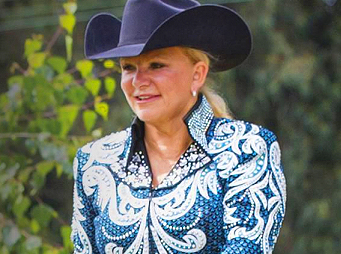
As a financial advisor to many high profile clients in the entertainment industry, Nancy Chapman spends her days doing international tax work and highend financial jobs for iconic musicians. But for someone whose daily work revolves around the glitz and glamour of Hollywood moguls, Chapman’s personal path in the horse industry has been far from paved in gold.
Continue reading …An Ambassador, A Leader, A Friend – Remember Peter Cofrancesco, III
October 26, 2017 Comments Off on An Ambassador, A Leader, A Friend – Remember Peter Cofrancesco, III
The horse industry lost one of its brightest lights and biggest stars on August 1, 2017, when Peter Cofrancsesco, III passed away at the young age of 45. To say that the Quarter Horse industry lost an ambassador is just barely scraping the surface of the passion and years of work that Peter did not just for the breed, not just for the stock horse industry, but for all facets of the horse industry across the country.
Continue reading …Should Judge’s Placings Be Announced At World Shows?
October 25, 2017 Comments Off on Should Judge’s Placings Be Announced At World Shows?
A change in protocol at this year’s AjPHA World Show sparked a debate among both World Show newcomers and veterans. In past years, APHA has announced the individual judge’s selections before announcing overall placings in each class.
Continue reading …Your Horse And The Power Of The Pedigree
October 24, 2017 Comments Off on Your Horse And The Power Of The Pedigree
Whether you have made the decision to breed your first foal or your next, your decision provides you with a wonderful opportunity to become more knowledgeable about the history of your breed and the make-up of some of your favorite stallions.
Continue reading …Out Of The Box Thinking – Ways Events Are Bringing the Fun Back
October 23, 2017 Comments Off on Out Of The Box Thinking – Ways Events Are Bringing the Fun Back
Horse show organizers around the country have recognized that in a field crowded with options, they must offer something special to keep exhibitors hauling to their events. The result is that shows are becoming more fun with a multitude of fresh ideas that aren’t restricted to competition alone. Is this the future of horse showing? Several successful show organizers share their views on why it’s the experience that matters.
Continue reading …The Secrets of Saddle Customization
October 20, 2017 Comments Off on The Secrets of Saddle Customization
From the crown of a hat to polish on a horse’s hooves, a savvy rider knows that a refined presentation is an important part of competition. The little details of fit and style can set them apart from their peers and establish a positive first impression in the minds of the judges.
Continue reading …Free Stylin’ – Freestyle Reining is a Big Attraction at the Congress
October 19, 2017 Comments Off on Free Stylin’ – Freestyle Reining is a Big Attraction at the Congress
Freestyle Reining is one of the biggest attractions at the Congress. Here’s why!
Continue reading …Time for a Timeout? – Saddle Up and Set Yourself Free on a Horsey Vacay
October 17, 2017 Comments Off on Time for a Timeout? – Saddle Up and Set Yourself Free on a Horsey Vacay
You spend a lot of time with – and money on – your show horse. Why on earth would you want to spend your vacation that way? And we aren’t talking about a showcation, either.
Continue reading …Up Your Hat Game – From Traditional and Timeless to Fashion Forward
October 16, 2017 Comments Off on Up Your Hat Game – From Traditional and Timeless to Fashion Forward
Horse show fashion is anything but static. Exhibitors express themselves through their outfits of choice, carefully prepared and put together for the show arena.
Continue reading …Showmanship – The Next Level of Ground Work
October 13, 2017 Comments Off on Showmanship – The Next Level of Ground Work
Why showmanship is the advanced level beyond the round pen and longing. In this article I would like to explain the reasons why showmanship is the next level of ground work when training your horse, compared to round penning or longing.
Continue reading …







